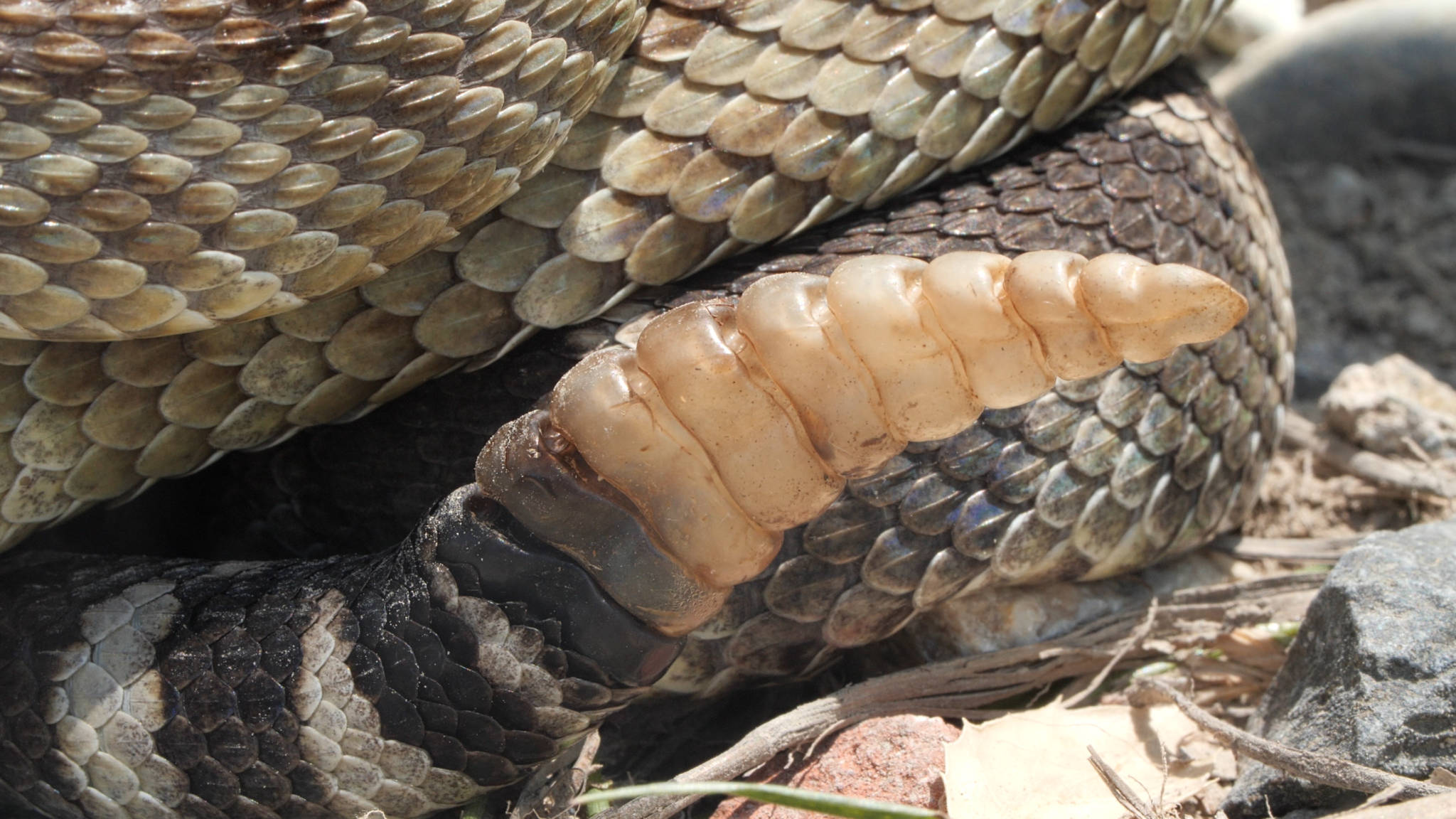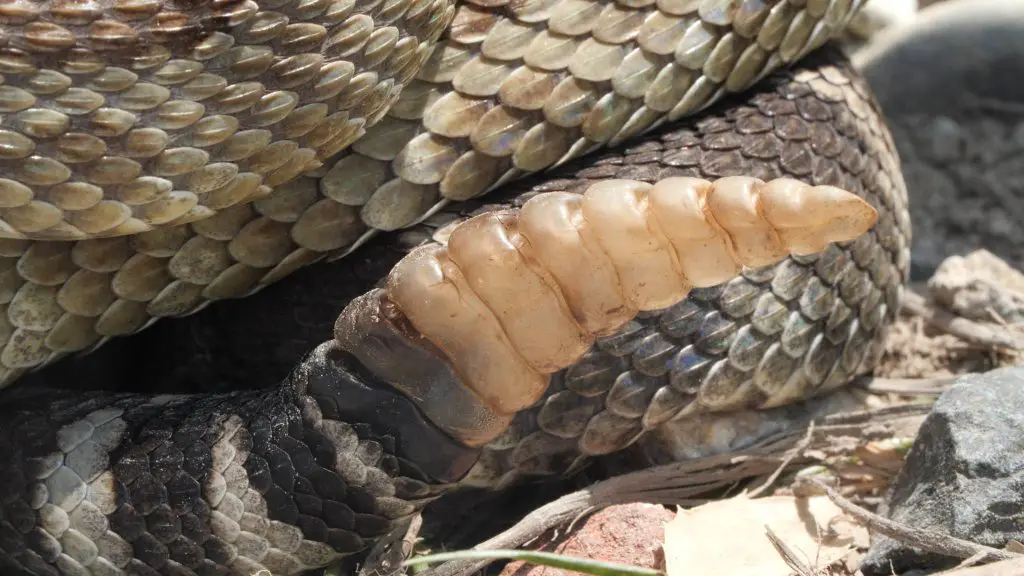Rattlesnakes are known for their distinctive sound, which is produced by a rattle located at the end of their tails. For many people, this sound is both fascinating and frightening. But what does the rattle on a rattlesnake actually mean? In this article, we’ll explore the science behind this unique feature and uncover the secrets of this deadly predator.
As one of the most fearsome creatures in the animal kingdom, rattlesnakes have fascinated and terrified humans for centuries. From their venomous bites to their unmistakable rattle, these snakes have captured our imaginations like few other animals. But what is the purpose of that rattle, and why do rattlesnakes produce it? By delving into the biology and behavior of these creatures, we can begin to unravel the mystery behind this iconic feature.
The rattle on a rattlesnake serves as a warning to potential predators. It is made up of segments of keratin, the same material as human nails, that produce a buzzing sound when vibrated. Each time a rattlesnake sheds its skin, a new segment is added to its rattle. The number of segments on a rattle does not indicate the snake’s age, but rather how many times it has shed its skin.

What Does the Rattle on a Rattlesnake Mean?
Rattlesnakes are fascinating creatures that are well-known for their iconic rattle. But what does the rattle on a rattlesnake mean? In this article, we will explore the purpose of the rattlesnake’s rattle and why it is such an important part of their anatomy.
What is a Rattlesnake’s Rattle?
The rattlesnake’s rattle is a unique adaptation that sets it apart from other snakes. The rattle is made up of a series of interlocking segments that are composed of keratin, the same material that makes up our hair and nails. Each time the snake sheds its skin, a new segment is added to the rattle, causing it to grow longer over time.
The rattle serves as a warning to potential predators and a means of communication between rattlesnakes. When threatened, a rattlesnake will shake its rattle rapidly, producing a loud buzzing sound that is designed to startle and intimidate its attacker. This warning signal lets potential predators know that the snake is dangerous and should be avoided.
How Does the Rattlesnake’s Rattle Work?
The rattlesnake’s rattle works by producing sound waves that are similar to the sound waves produced by a buzzing insect. The sound waves are created when the segments of the rattle vibrate against each other rapidly. The faster the snake shakes its rattle, the louder the buzzing sound becomes.
The sound of the rattlesnake’s rattle is so distinctive that it can be heard from a distance of up to 100 feet away. This gives potential predators plenty of warning to stay away from the snake and avoid getting bitten.
The Benefits of the Rattlesnake’s Rattle
The rattlesnake’s rattle has a number of benefits that make it an important adaptation for survival. Here are just a few of the benefits of the rattlesnake’s rattle:
- It warns potential predators to stay away
- It serves as a means of communication between rattlesnakes
- It helps the snake to defend itself against attackers
- It gives humans a warning to stay away from the snake
Rattlesnake Rattle Vs Other Snakes
While the rattlesnake’s rattle is unique to this species, other snakes have their own methods of warning off potential predators. For example, some snakes will hiss or puff up their bodies to make themselves appear larger and more threatening. Other snakes may use bright colors or patterns to warn predators that they are venomous.
However, the rattlesnake’s rattle is one of the most effective warning signals in the animal kingdom. Its distinctive sound is instantly recognizable and serves as a clear warning to stay away.
Conclusion
In conclusion, the rattlesnake’s rattle is a fascinating and important adaptation that helps these snakes to survive in the wild. Whether warning off potential predators or communicating with other rattlesnakes, the rattlesnake’s rattle is an essential tool for survival. So the next time you hear the distinctive buzz of a rattlesnake’s rattle, be sure to give these fascinating creatures a wide berth!
Frequently Asked Questions
How do rattlesnakes make their rattling sound?
Rattlesnakes have specialized tail segments that produce the rattle sound. These segments are called keratinous buttons and are made of the same material as our fingernails. As the snake vibrates its tail rapidly, the buttons hit against each other, creating the distinctive rattling noise.
The rattling sound serves as a warning to potential predators or threats. It lets them know that a venomous snake is nearby and to stay away.
Do all species of rattlesnakes have rattles?
No, not all species of rattlesnakes have rattles. Some species, such as the Mojave rattlesnake, have a rattle that is very small and difficult to hear. Other species, such as the timber rattlesnake, have a very loud and easily recognizable rattle.
The presence or absence of a rattle does not determine whether a snake is venomous or not. It is important to always treat any snake encounter with caution and respect.
How many segments are in a rattlesnake’s rattle?
The number of segments in a rattlesnake’s rattle can vary greatly depending on the age and size of the snake. A newborn rattlesnake may only have a single button, while an adult can have up to 30 or more.
Each time a rattlesnake sheds its skin, it adds a new button to its rattle. This means that the number of segments in a rattlesnake’s rattle can indicate its age to some extent.
Can rattlesnakes control their rattles?
Yes, rattlesnakes can control their rattles to some extent. They can vibrate their tails without making a sound, or they can produce a softer or louder rattle depending on the situation.
Rattlesnakes may also use other tactics, such as hissing or striking, to warn off potential threats. It is important to remember that rattlesnakes are not aggressive animals and will only use these warning signals as a last resort.
What should I do if I encounter a rattlesnake?
If you encounter a rattlesnake, it is important to stay calm and keep a safe distance. Do not approach the snake or attempt to handle it in any way.
If you are hiking or walking in an area known to have rattlesnakes, be sure to wear sturdy boots and watch where you step. Rattlesnakes are most active during the warmer months and tend to avoid humans whenever possible.
If you are bitten by a rattlesnake, seek medical attention immediately. Do not attempt to suck out the venom or apply a tourniquet, as these methods can do more harm than good.
In conclusion, the rattle on a rattlesnake is a fascinating adaptation that serves as a warning to potential predators. This unique feature is made up of interlocking segments that produce a distinct sound when vibrated. The rattle is used to communicate the snake’s presence and to deter predators from attacking.
While the rattle on a rattlesnake may seem intimidating, it is important to remember that these creatures play an important role in their ecosystem. They help control rodent populations and provide a food source for other animals. Additionally, many rattlesnakes are threatened or endangered due to habitat loss and over-harvesting for their skin and meat.
Overall, the rattle on a rattlesnake is just one of the many fascinating features of these incredible creatures. By understanding their behavior and respecting their space, we can coexist peacefully with these important members of our natural world.


